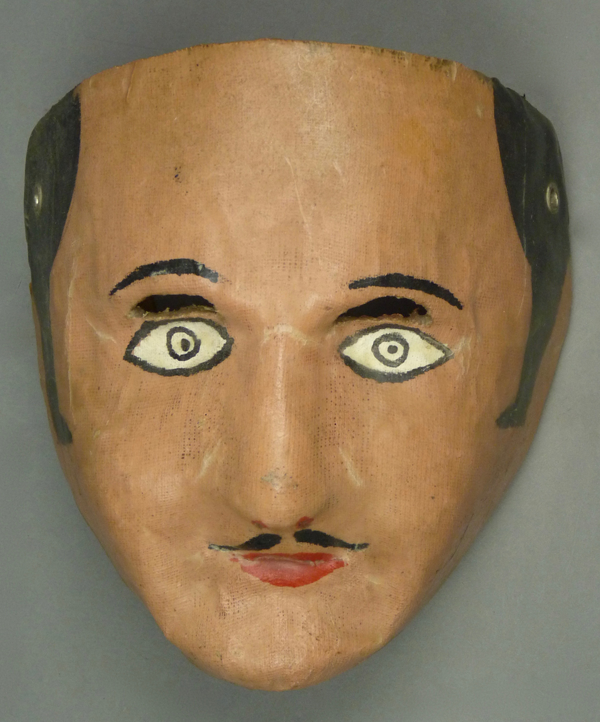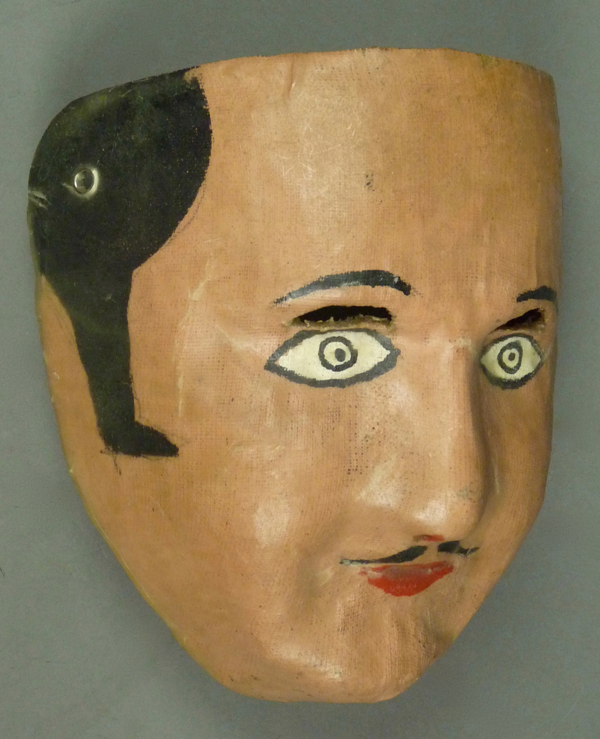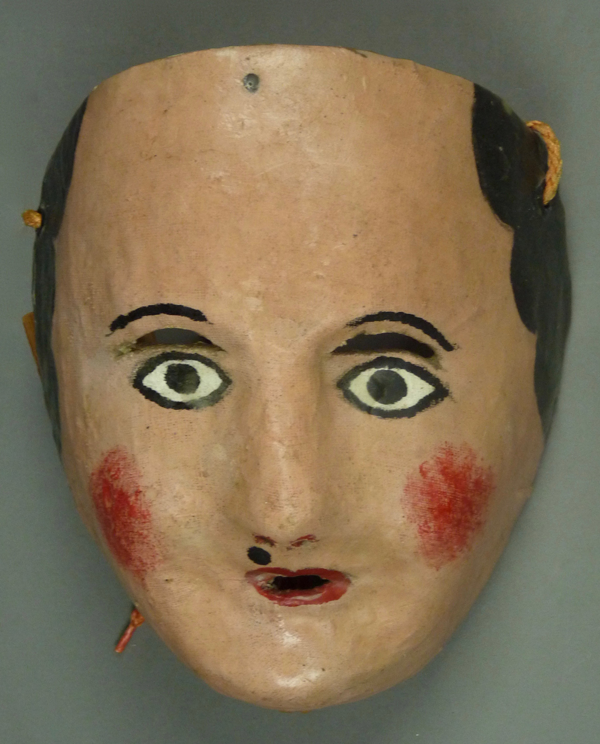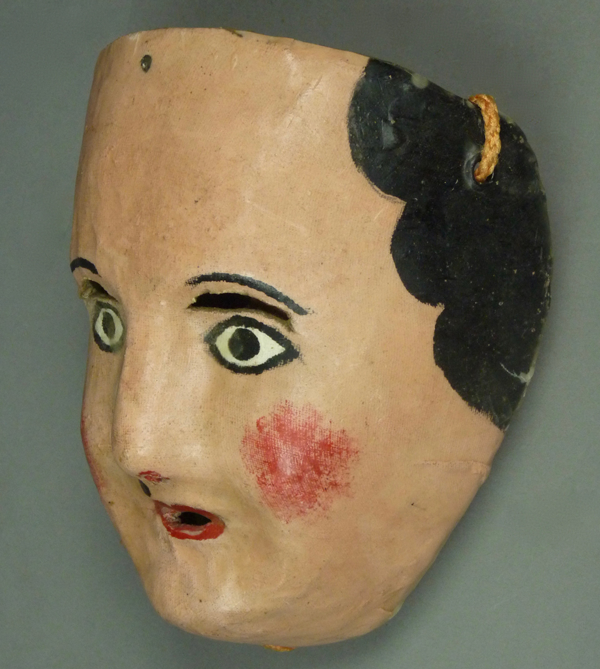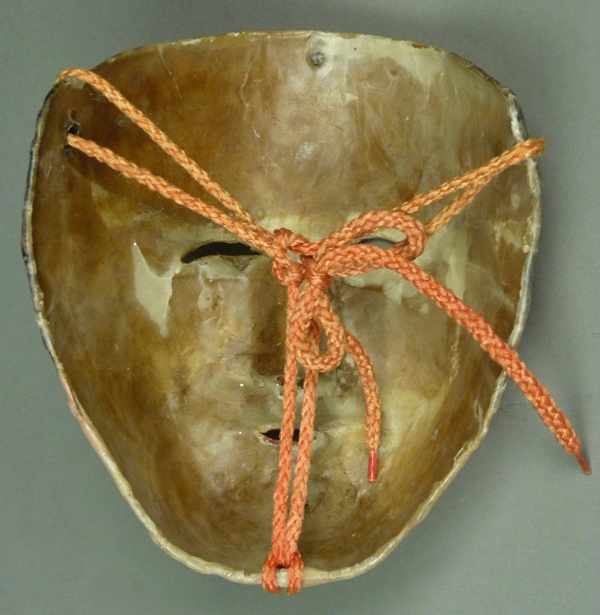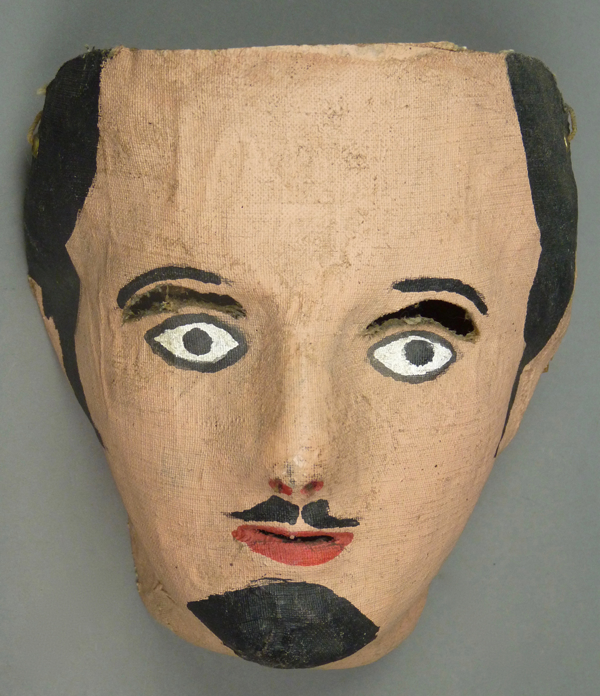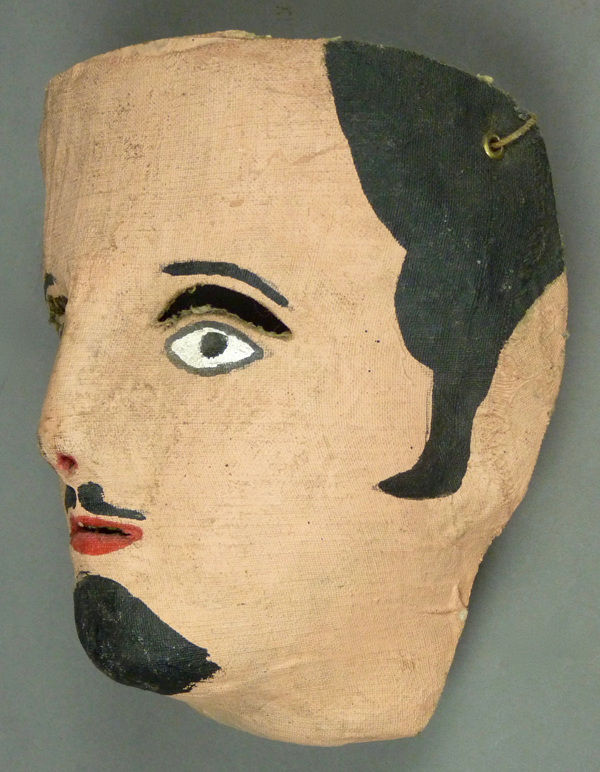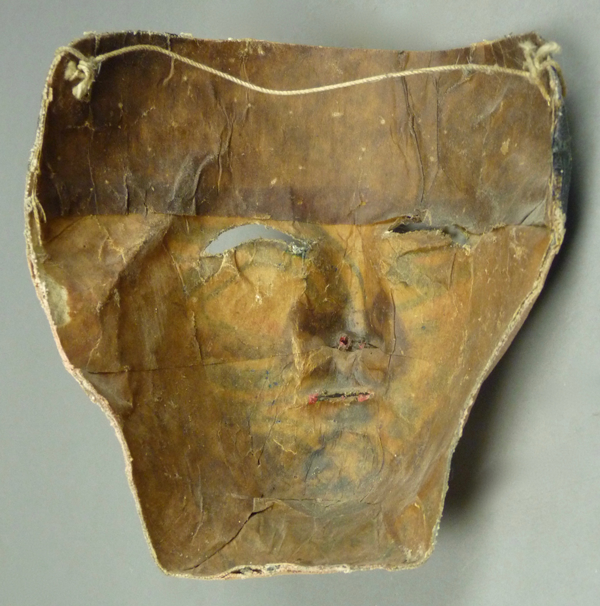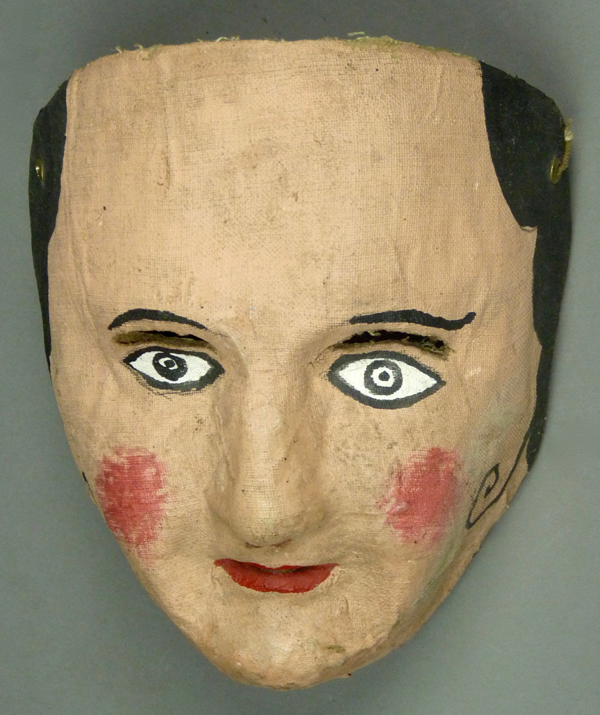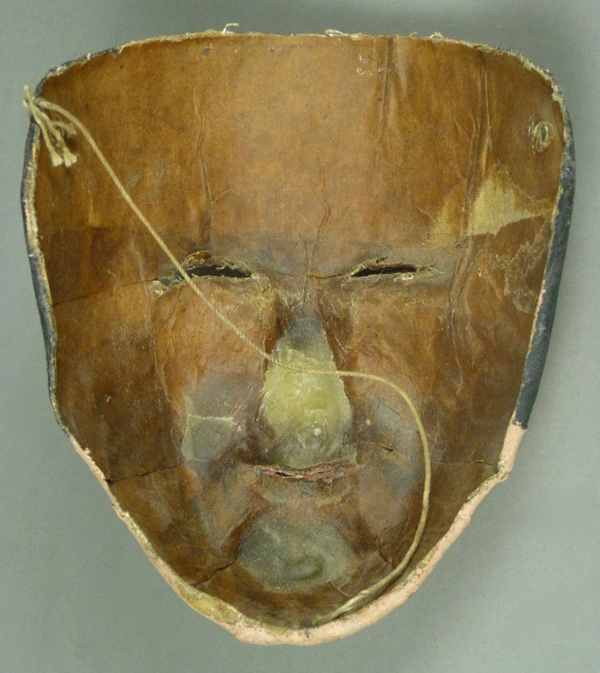Today we will look at two pairs of masks from San Bartolo Coyotepec, Oaxaca—masks of Kings and Queens. These were danced in Los Jardineros, a local variant of the Moros y Cristianos dance drama. There is a dance photo taken by Ruth Lechuga in 1977, along with another pair of these masks, in Barbara Mauldin’s book—Masks of Mexico: Tigers, Devils, and the Dance of Life (page 65). There is another dance photo on the cover of Danzas y Bailes Populares: Arte Mexicano, authored by Electra L. Mompradé and Tonatiúh Guttiérrez and published by Editorial Hermes (Barcelona, 1976). On p. 126 those authors explain that there is a Christian King and Queen, a Moorish King and Queen, and their respective courts. In Mexican Masks, Donald Cordry also described these Jardineros masks (pp. 120-123, Plates 169 and 170). He illustrates that stilt dancers in Santa María Roala, Oaxaca wear similar masks, but with straw hats rather than crowns (Plate 137, page 97). Cordry translated Jardineros as “gardeners,” but it is probably more accurate to recall the persistent importance of the Jardin (or Zocolo) as the elegant town square in Mexican cities such as Cuidad Oaxaca, where prominent citizens would promenade in the evening, to see and be seen. The Jardineros portray those who occupy royal gardens. In the present era, musicians play in the evening for those in the Zocolo as couples still promenade.
Here is a Youtube™ video of a children’s performance of the Jardineros from San Bartolo Coyotepec, Oaxaca.
https://www.youtube.com/watch?v=NC1GpWdmV3E
I obtained these Jardineros masks from the Gary Collison estate in 2008. Gary had gotten them from Bob Ibold. They were made from cloth that was pressed into shape over molds. Then the masks were coated with beeswax in order to make them more durable, and they were fitted with metal grommets for the secure attachment of cords or straps. The first pair were coated heavily with wax, front and back, while the second pair has no more than a light wax coating on the face, but the same heavy reinforcement of the back. I don’t have an explanation for this variation. Here is one of the heavily waxed masks, with a male face to portray a King.
The heavy wax coating gives the mask a smooth appearance.
This is a handsome face. The pattern of the cloth face is nearly hidden under the wax.
This mask is 8 inches tall, 6½ inches wide, and 3 inches deep.
The glossy coating of wax is evident.
The mate to this first mask has a female face. It is otherwise very similar.
On this mask, as with the first, the pattern of the cloth is hidden by the heavy coating of wax.
This mask is 8 inches tall, 6½ inches wide, and 3 inches deep, the same as the first mask. Perhaps they were even made with the same mold, and then differentiated for gender with different painted details.
The back of this mask is glossy from the wax coating. A shoelace provides a heavy strap. I don’t know whether any of these masks have actually been danced.
The third mask has a male face that is only minimally waxed on the front. At first I thought that it wasn’t waxed at all.
The decoration is simple but the masks seem effective.
This mask is 8 inches tall, 7 inches wide, and 3½ inches deep. It is a little larger than the first two and the back reveals a square jaw.
The wax on the backs of this mask and the next looks quite similar to that on the backs of the first two masks.
The last mask, which has a female face, also appears to be only lightly waxed.
The painted hair has a cartoonish quality.
This mask is 8 inches tall, 6¼ inches wide, and 3 inches deep, just a little different from the other three.
This is the last of the waxed backs. It has a similar shape to the backs of the first two masks, while it is not at all like the third mask.
Next week I will share some additional Moro Chino masks that I found in my collection, along with one more that I recently obtained on EBay™.
Bryan Stevens

